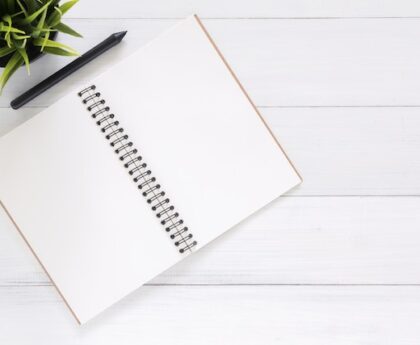Accommodation Cleaning: Clean Spaces, Happy Faces – The Impact on Occupants
In the realm of hospitality, the cleanliness of accommodations plays a pivotal role in creating memorable guest experiences. Clean spaces not only please the eye but also contribute significantly to the overall satisfaction of occupants. In this comprehensive guide, we will delve into the world of accommodation cleaning and its profound impact on the well-being and happiness of guests. From the importance of cleanliness to the latest cleaning innovations, we will uncover the secrets to providing a spotless and inviting environment that leaves occupants with happy faces.
The Importance of Clean Accommodations
Cleanliness is often the first and most lasting impression that guests have when they step into an accommodation, whether it’s a hotel room, vacation rental, or any other lodging. Clean spaces are not just a matter of aesthetics; they are a reflection of an establishment’s commitment to guest comfort and well-being.
First Impressions Matter
Imagine arriving at a hotel after a long journey and opening the door to a pristine, well-kept room. The immediate sense of relief and comfort is undeniable. On the other hand, walking into a dirty, unkempt space can have a negative impact, setting a disappointing tone for the entire stay.
Health and Well-Being
Clean accommodations are not just about appearances; they are essential for the health and safety of guests. Dust, allergens, and pathogens can accumulate in neglected spaces, leading to allergies and illnesses. Maintaining a clean environment is a fundamental duty to ensure the well-being of occupants.
The Three Pillars In Accommodation Cleaning
Cleanliness and Hygiene:
The first and foremost pillar of accommodation cleaning is maintaining a high standard .of cleanliness and hygiene. This involves thorough cleaning of all areas within the accommodation, including bedrooms, bathrooms, common spaces, and kitchen facilities. Proper sanitation and disinfection are essential, especially in shared accommodations, to prevent the spread of germs and ensure the safety and well-being of occupants. Cleanliness is not just about appearance but also about creating a healthy and comfortable environment for guests
Attention to Detail:
The second pillar is attention to detail. Accommodation cleaning goes beyond the basics of cleaning floors and surfaces. It includes meticulous cleaning of often-overlooked areas such as corners, crevices, and high-touch surfaces like light switches and doorknobs. Paying attention to these details not only enhances the overall cleanliness but also contributes to the aesthetic appeal of the space. Guests notice when an accommodation is well-maintained and thoughtfully cleaned, and it leaves a lasting positive impression.
Guest Satisfaction:
The third pillar of accommodation cleaning is guest satisfaction. Ultimately, the goal of cleaning is to provide a comfortable and enjoyable experience for occupants. Guest satisfaction is achieved through not only cleanliness but also through creating a welcoming atmosphere. This includes the arrangement of furniture, the provision of fresh linens and amenities, and ensuring that the space is free from any unpleasant odors. Meeting and exceeding guest expectations in terms of cleanliness and comfort is vital for repeat business and positive reviews.
The Impact of Advanced Cleaning Technologies
Now, let’s explore some of the advanced cleaning technologies and innovations that are shaping the accommodation cleaning industry.
1. Electrostatic Disinfection
Electrostatic disinfection systems have gained popularity for their ability to efficiently and evenly distribute disinfectant on surfaces. This technology is particularly valuable in times of health crises, such as the COVID-19 pandemic, ensuring thorough and effective disinfection.
2. UV-C Sterilization
Ultraviolet-C (UV-C) light is a powerful tool for disinfection. UV-C devices can eliminate a wide range of pathogens, making them ideal for cleaning and sanitizing guest rooms, common areas, and high-touch surfaces.
3. Smart Cleaning Solutions
The Internet of Things (IoT) has made its way into the commercial cleaning industry. Smart cleaning solutions use sensors and data analytics to optimize cleaning schedules and resource allocation. This ensures that hotel cleaning is done when and where it is needed most, enhancing efficiency and cost-effectiveness.
4. Green Cleaning Practices
Sustainability is a growing concern, and guests appreciate eco-friendly practices. Green cleaning products and methods not only reduce the environmental impact but also create a healthier indoor environment for occupants.
Conclusion
Clean spaces in accommodations have a profound impact on the satisfaction and happiness of occupants. A commitment to cleanliness not only leaves guests with happy faces but also contributes to their overall well-being. Accommodation cleaning businesses can enhance their online presence and attract clients by focusing on the three pillars. By embracing advanced cleaning technologies such as electrostatic disinfection, UV-C sterilization, smart cleaning solutions, and green cleaning practices, accommodation cleaning companies can provide superior service, keep guests safe and healthy, and ensure their online presence is as spotless as the spaces they clean.
FAQs
- How often should accommodations be cleaned and sanitized?
The frequency of cleaning and sanitizing accommodations depends on several factors, including occupancy rates and the nature of the space. However, it’s advisable to follow industry standards and guidelines for cleaning and disinfection.
- Are green cleaning products as effective as traditional cleaning products?
Yes, green cleaning products can be just as effective as traditional ones while being environmentally friendly. They are formulated to meet high cleaning standards while minimizing their impact on the environment.
- Can advanced cleaning technologies like UV-C sterilization be integrated into existing cleaning routines?
Yes, advanced cleaning technologies can be integrated into existing cleaning routines with proper training and implementation. They are designed to enhance and complement traditional cleaning methods, providing an added layer of protection and effectiveness.

